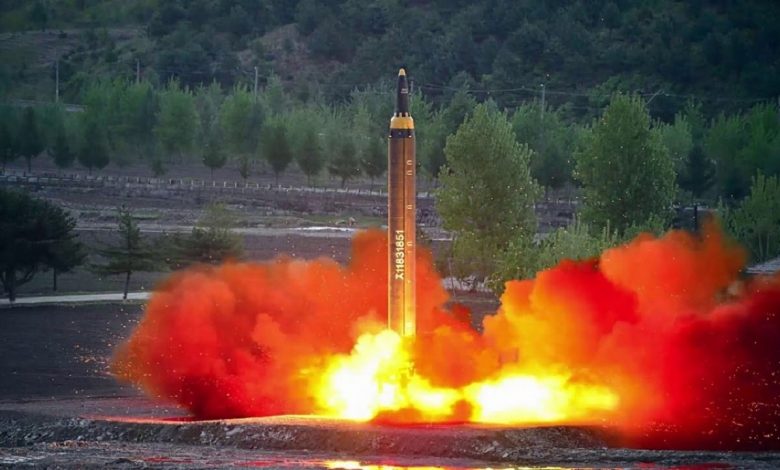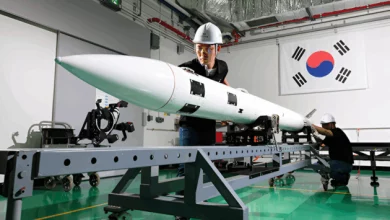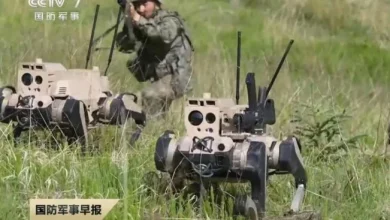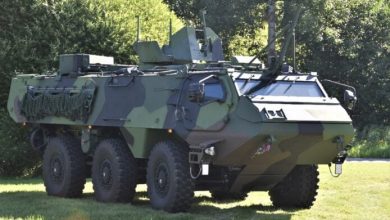Analysis: North Korea’s new solid fuel ICBM, a game changer?

The North Korean threat is real. Pyongyang has proven in recent years that the DPRK intends to not only expand but modernize both its nuclear weapons and the platforms that will carry them.
Last week, the United States and South Korea issued a very important joint statement as a result of meetings between Presidents Yoon and Biden. The statement has come to be known as the “Washington Declaration.”
The document is important because it outlines the initiatives that the United States and South Korea will conduct in order to continue to ensure extended deterrence for our important ally in Asia in the case of nuclear weapons use by the North Koreans. It also outlines important new actions Washington and Seoul will take to ensure North Korea is deterred from ever using nuclear weapons in a conflict.
This document and the talks surrounding it became necessary because of North Korea’s recent actions to enhance and enlarge its nuclear weapons program and the key platforms that carry those weapons – ballistic missiles. For a good example of why this is so important, one has only to turn to the recent successful ballistic missile test launch of what the North Koreans call the “Hwasong-18,” Pyongyang’s first solid fuel ICBM, and a missile most analysts assess to be capable of hitting the continental United States.
North Korea’s Tests and Threats
The rapid development and unveiling of the Hwasong-18 has been well documented. A static engine test was conducted in December 2022. The missile was also exhibited in a military parade on February 8. The actual test launch of the missile then occurred on April 14. The three-stage missile flew successfully on the typical trajectory the North Koreans have tested their long-range missiles on in recent years, in other words, it was not tested to show its “full range” if deployed in combat but rather, flew at an angle almost straight up into the air to show what that range could be while landing in an area fairly close to Japan.
All of these events were lauded in North Korean propaganda. The important aspect of this missile is that it uses solid fuel propellant. Solid fuel missiles have less of a logistics chain than liquid fuel missiles, can be pre-loaded and moved much more safely – meaning fueling of the missile becomes far less of an impediment to denial and deception of South Korean and U.S. intelligence collection – and thus could potentially be launched with a significantly reduced warning than the liquid fuel ICBM’s that North Korea has previously tested.
Without Warning System
Because the North Koreans have hailed this as an incredible new weapon, and because many analysts in recent weeks have lauded this as a system that could potentially be a game changer, it is important to examine exactly what new capabilities this brings to the DPRK. It is true that the North Koreans would be able to conceal this system more easily and load it more efficiently than their other successfully tested (several times) ICBM (the Hwasong-15) that poses a threat to the continental United States. But the North Koreans are among the best in the world at cover and concealment, and this no doubt would also apply to the Hwasong-15.
It is important to note that the North Koreans have wanted us to see nearly all of their ICBM launches. In a situation where they did not want us to see preparations or fueling it is very likely they would be able to conceal those from South Korea/United States collection systems. And it is important to note that these are all road-mobile systems. Thus, while the Hwasong-18 will be easier for the North Koreans to provide cover and concealment for than the Hwasong-15, it does not mean allied collection would be able to easily detect the launch preparations for a Hwasong-15.
So the question then becomes, what does this new missile add to the threat? For one thing, because of the efficiency that it gives the North Koreans, it is an improvement over other systems. For another thing, once this missile is fully tested – and there will need to be more tests – and put into production, it will add to the arsenal of weapons that North Korea can arm and target the United States with. These are not small things. The more ICBM systems the North Koreans have, the harder it will be to take all of them out with ballistic missile defense when they are launched. North Korea already had the capability to launch an ICBM at the United States and proved it for the first time in 2017 with the successful launch of the Hwasong-15. Thus, this potentially adds to the number of systems Pyongyang can threaten the United States with and shows that North Korea remains on track to “modernize” its ballistic missile arsenal.
The question arises of where North Korea got this system. The answer is actually far more simple than many analysts want to acknowledge. The evidence is out there and has been for several years.
The Russians appear to be providing technology and parts (at the very least) to the North Koreans for a variety of ballistic missile systems. This appears to have been going on, from what we could see, since at least 2018. In fact, Russian companies have been sanctioned (several times) by the United States for providing materials to the North Koreans.
Technical support and perhaps even whole systems have likely also been provided. Anyone who thinks the North Koreans just rolled out of bed one morning and came up with solid-fuel technology for a three-stage ICBM needs to go back and do some research. This is important because it is possible, in fact likely, that the Russians, or “Russian companies,” will continue to support North Korea’s ballistic missile programs, and in fact, may assist them as they continue to roll out new systems.
The North Korean threat is real. Pyongyang has proven in recent years that the DPRK intends to not only expand but modernize both its nuclear weapons and the platforms that will carry them. They have done this with many of their systems – not just their ICBM fleet. Thus, the concern that South Korea’s government has shown over the expanding North Korean threat is credible. The latest launch of an ICBM with new technology is only the latest example of what there is likely to be more of as we watch the North Koreans continue to build up and modernize both their tactical and strategic combat capabilities. The Hwasong-18 may not be a “game-changer,” but it certainly adds to the complexity of the threat that we continue to face from Pyongyang.





